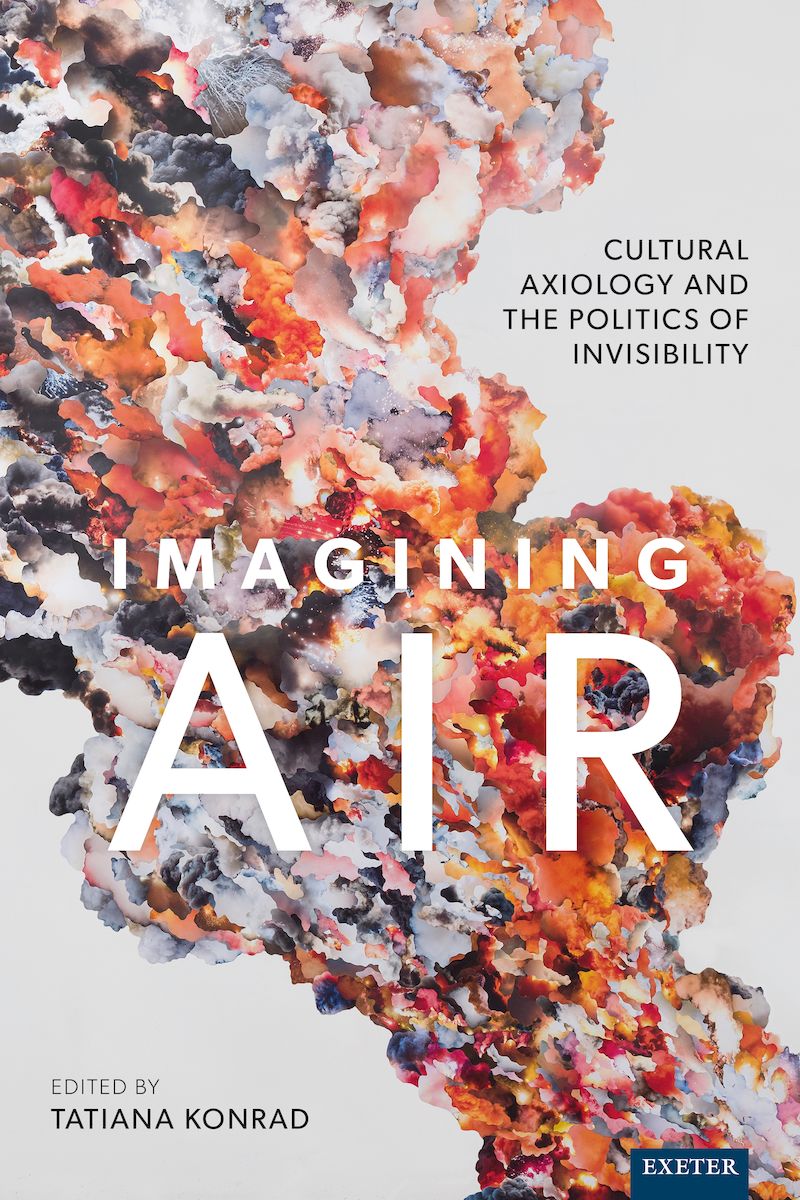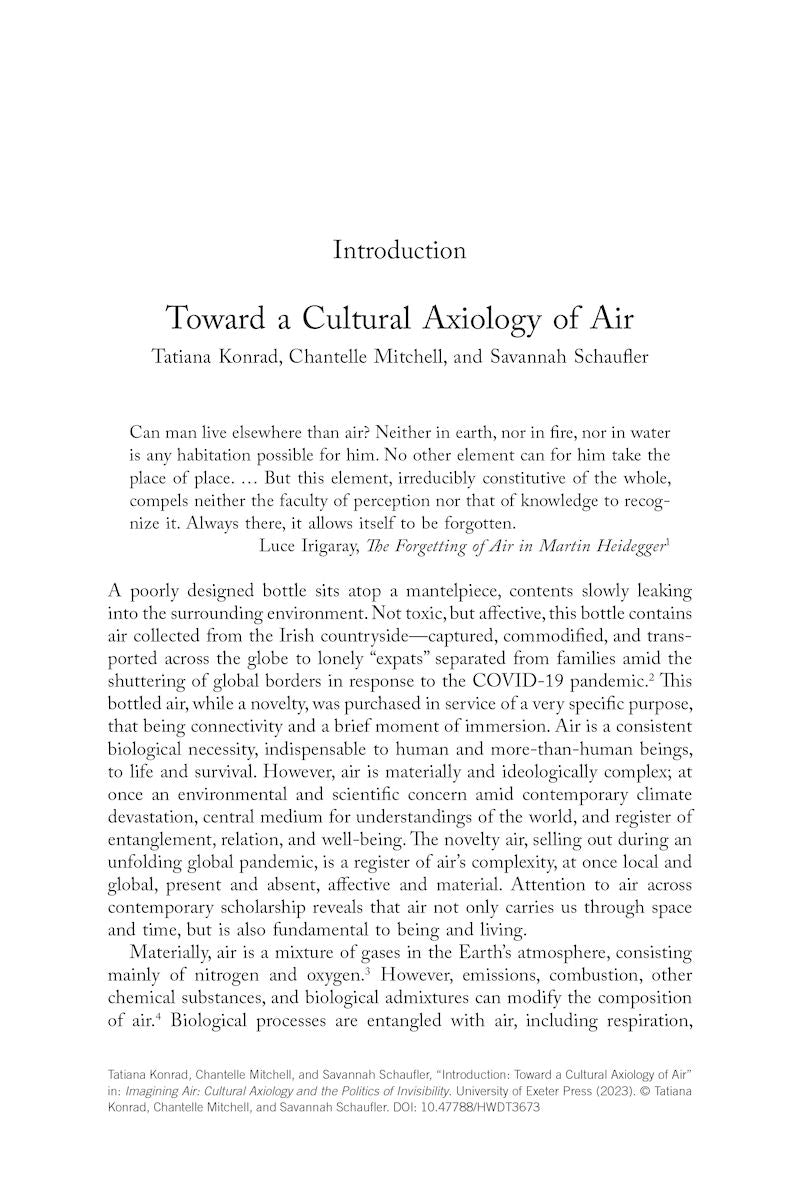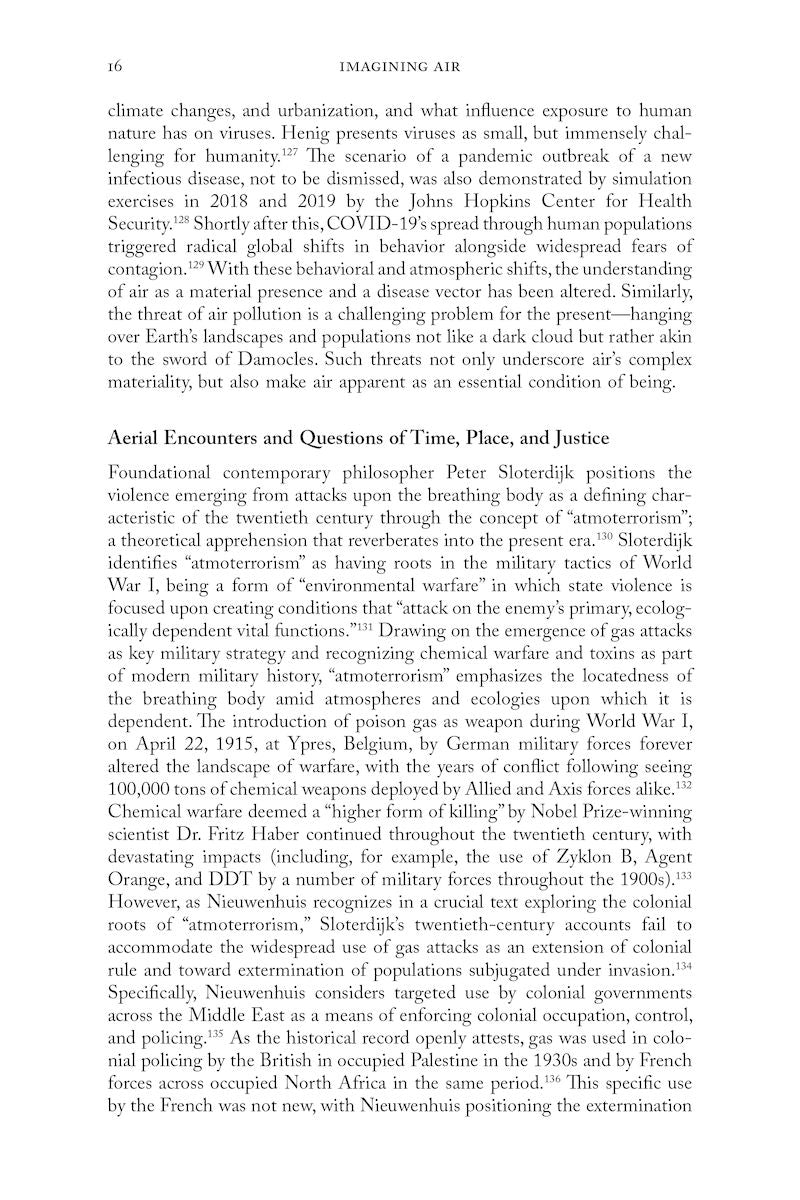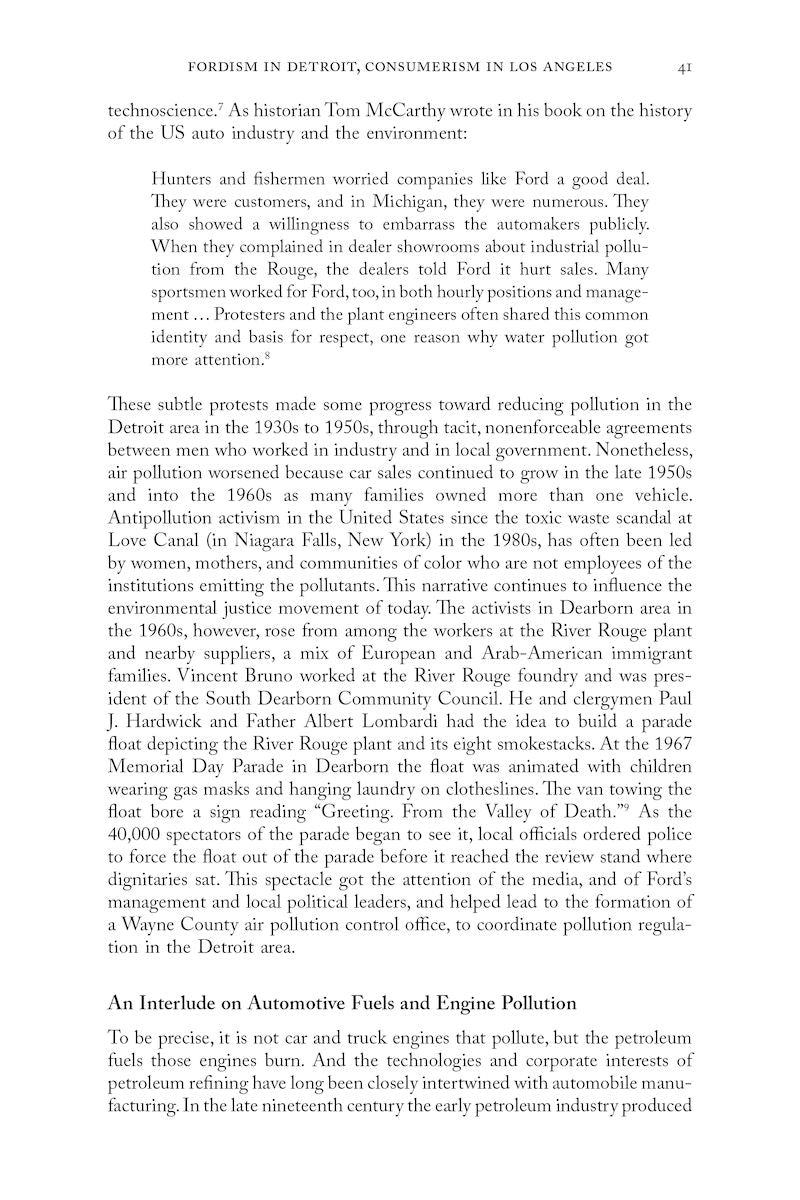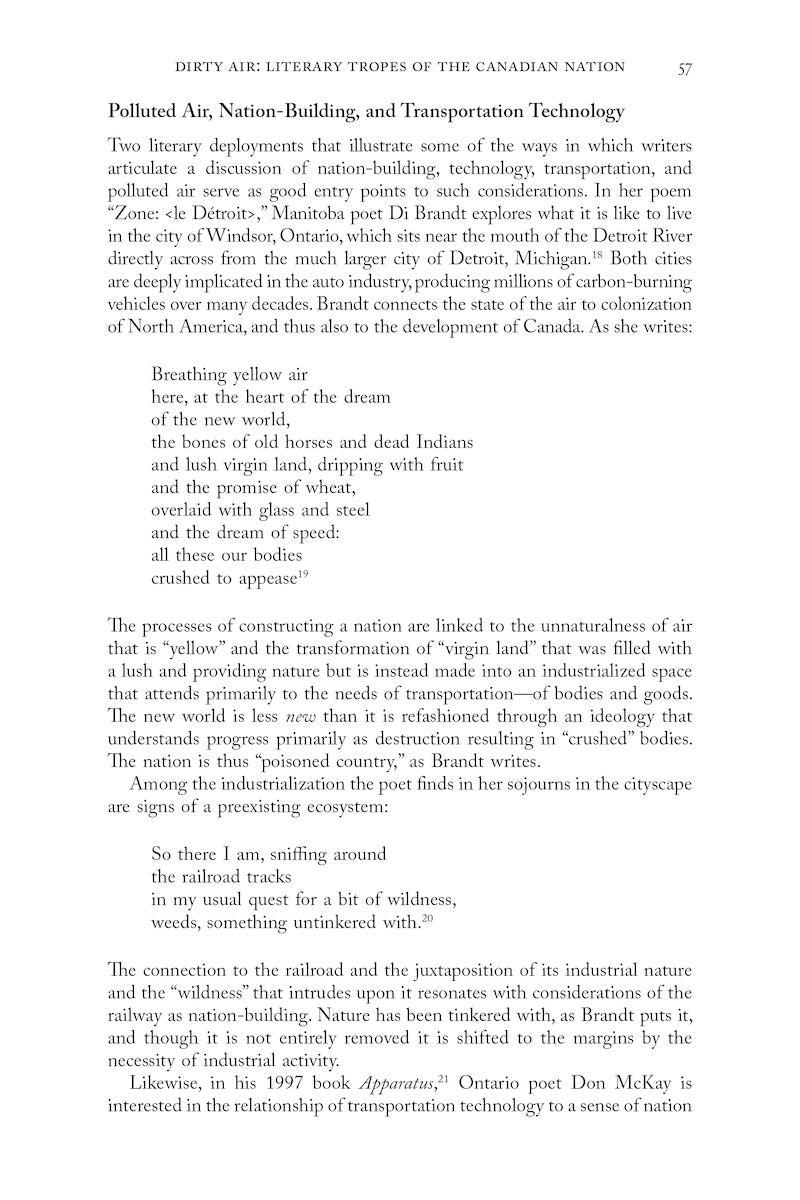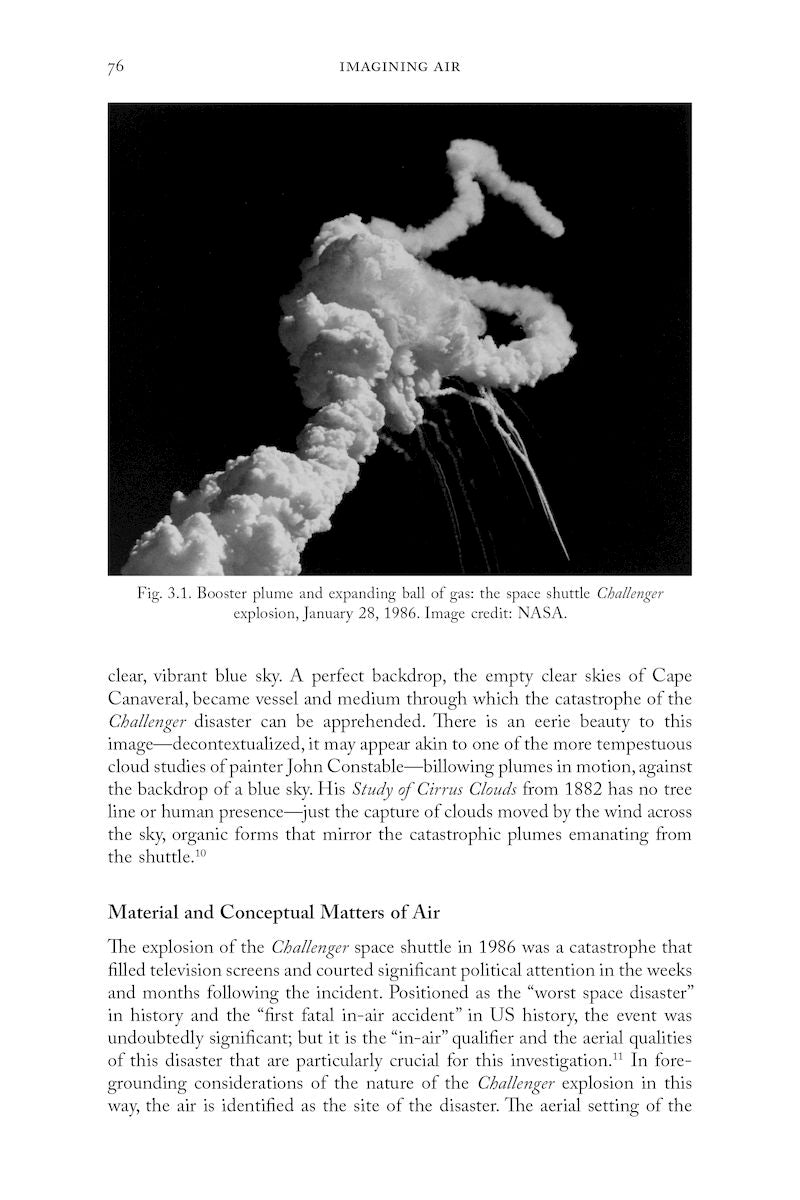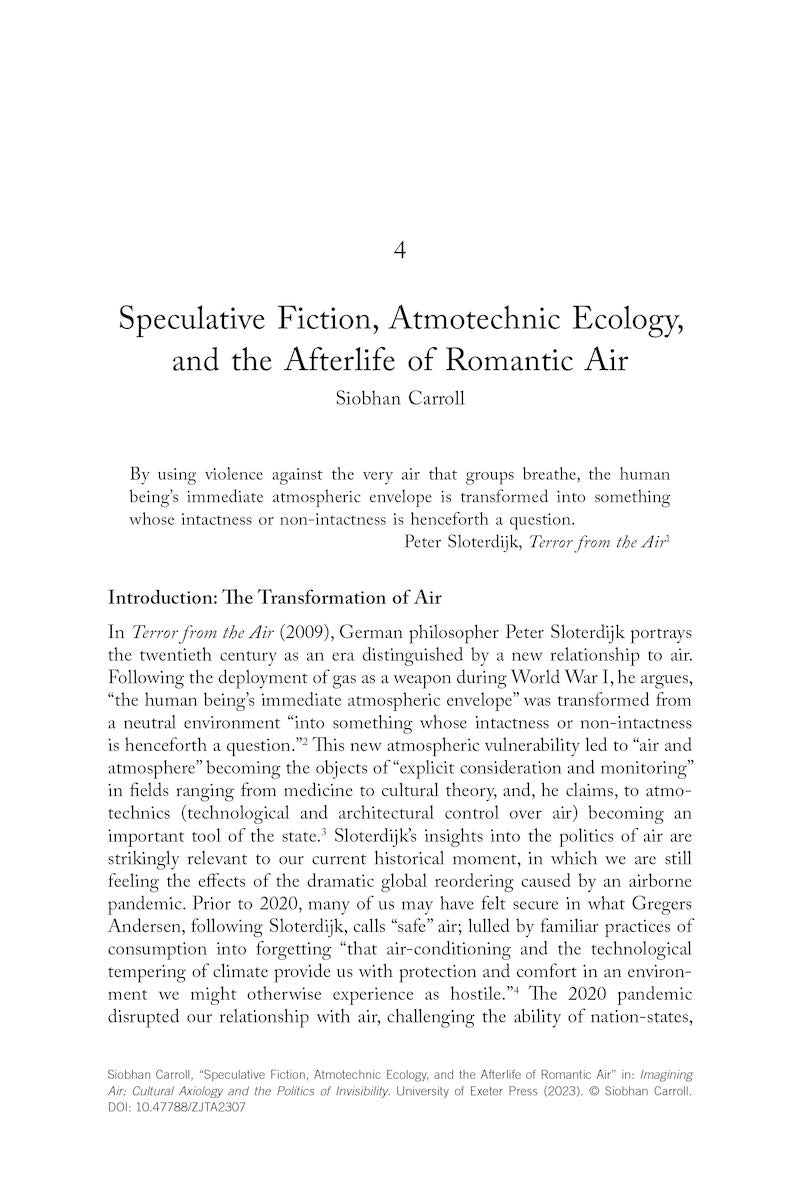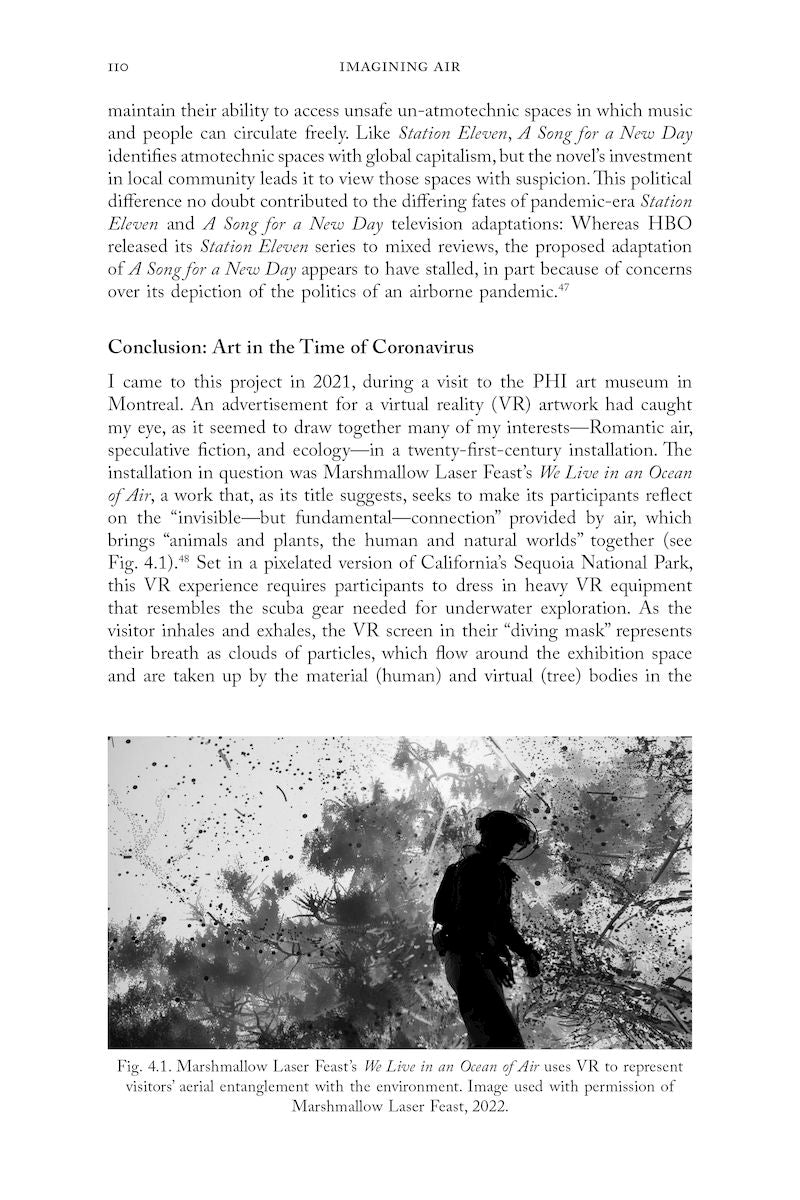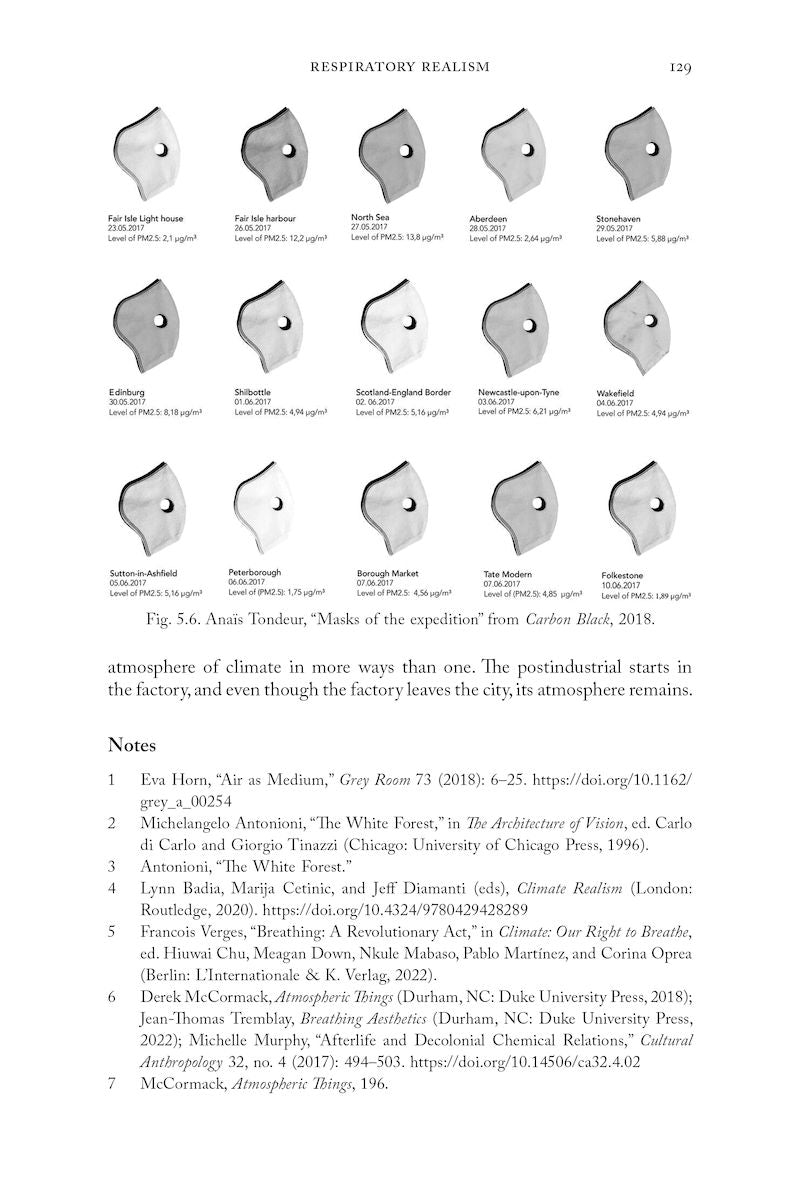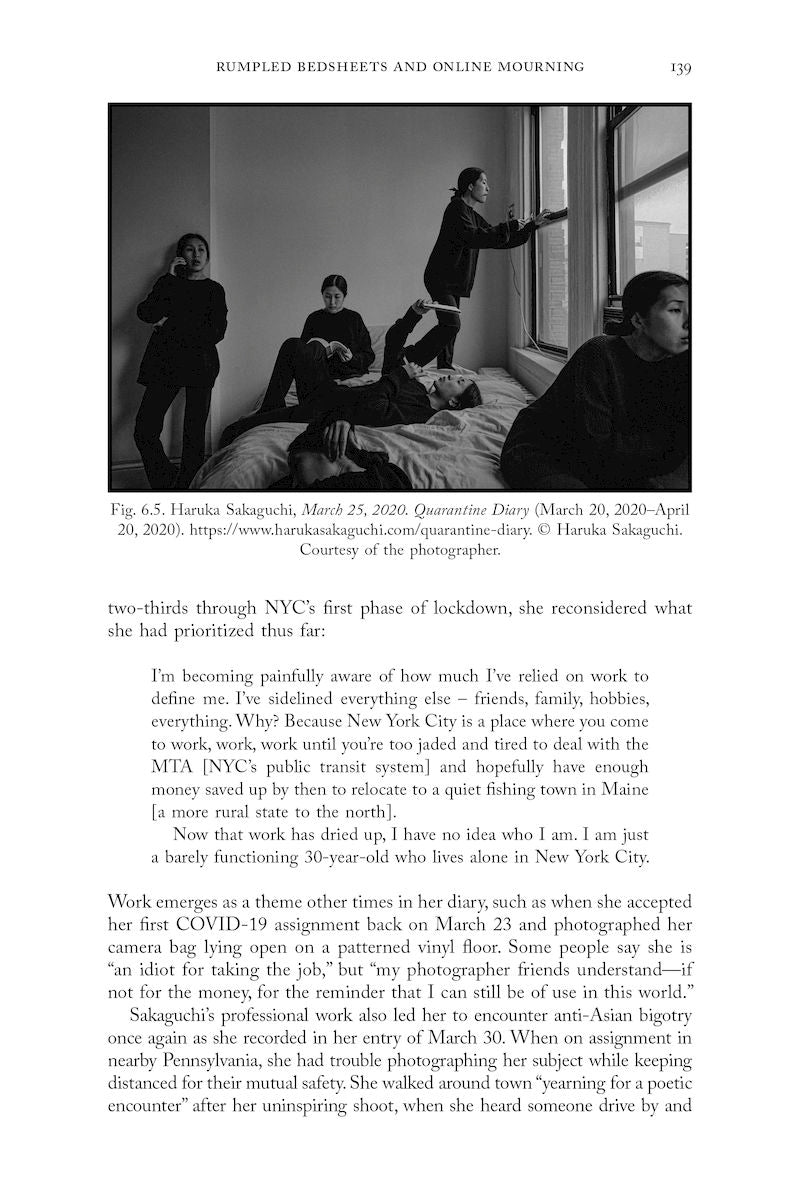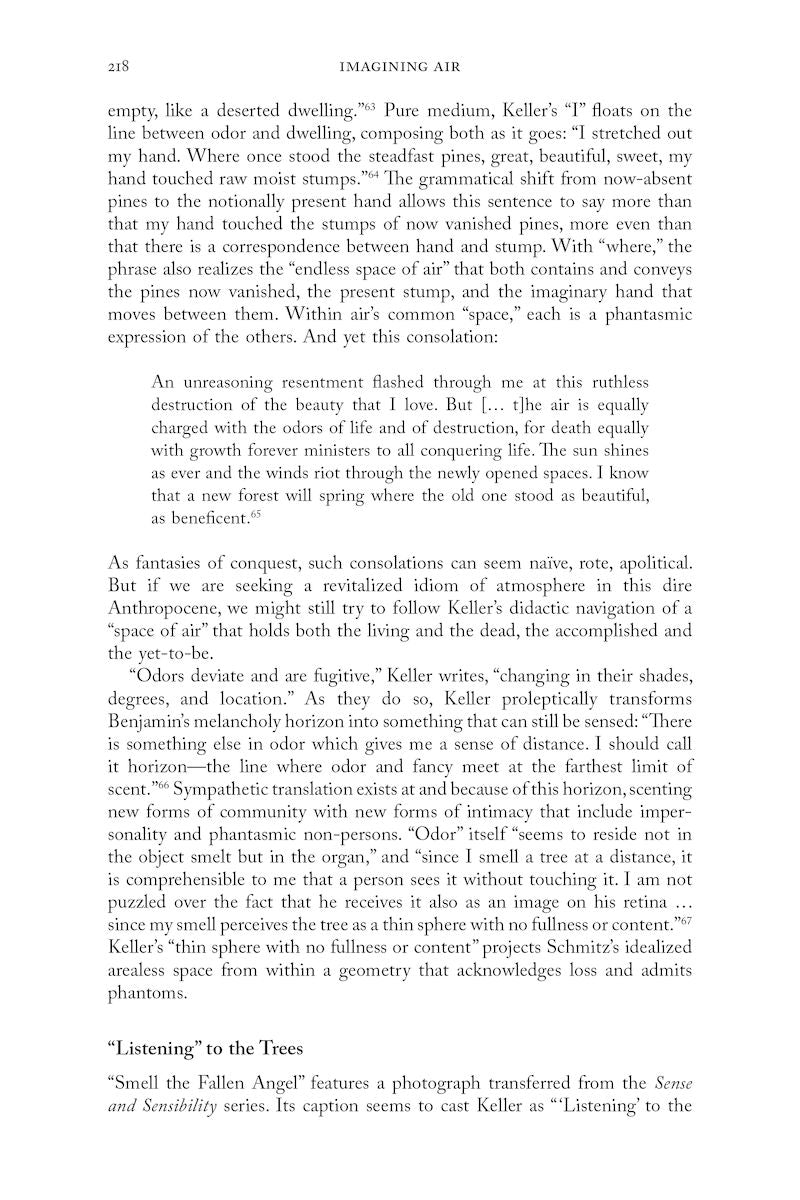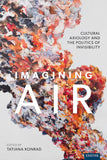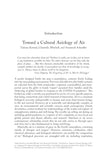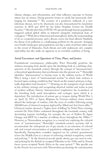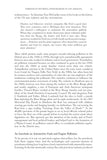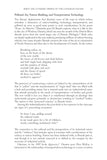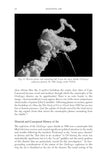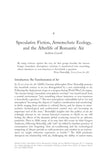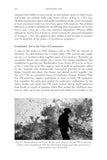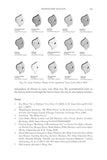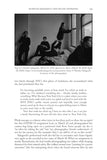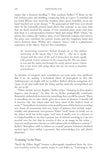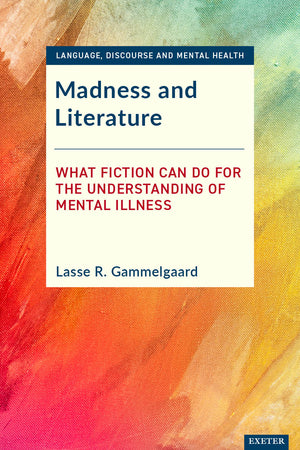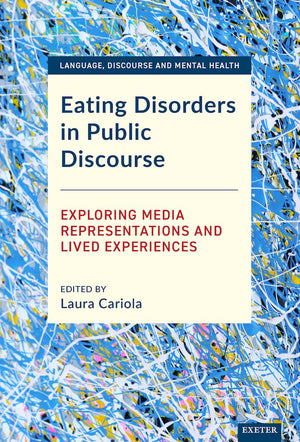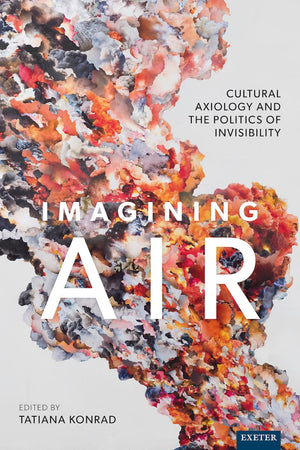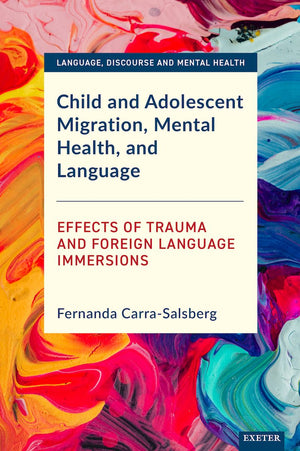University of Exeter Press
Imagining Air
Cultural Axiology and the Politics of Invisibility
Couldn't load pickup availability
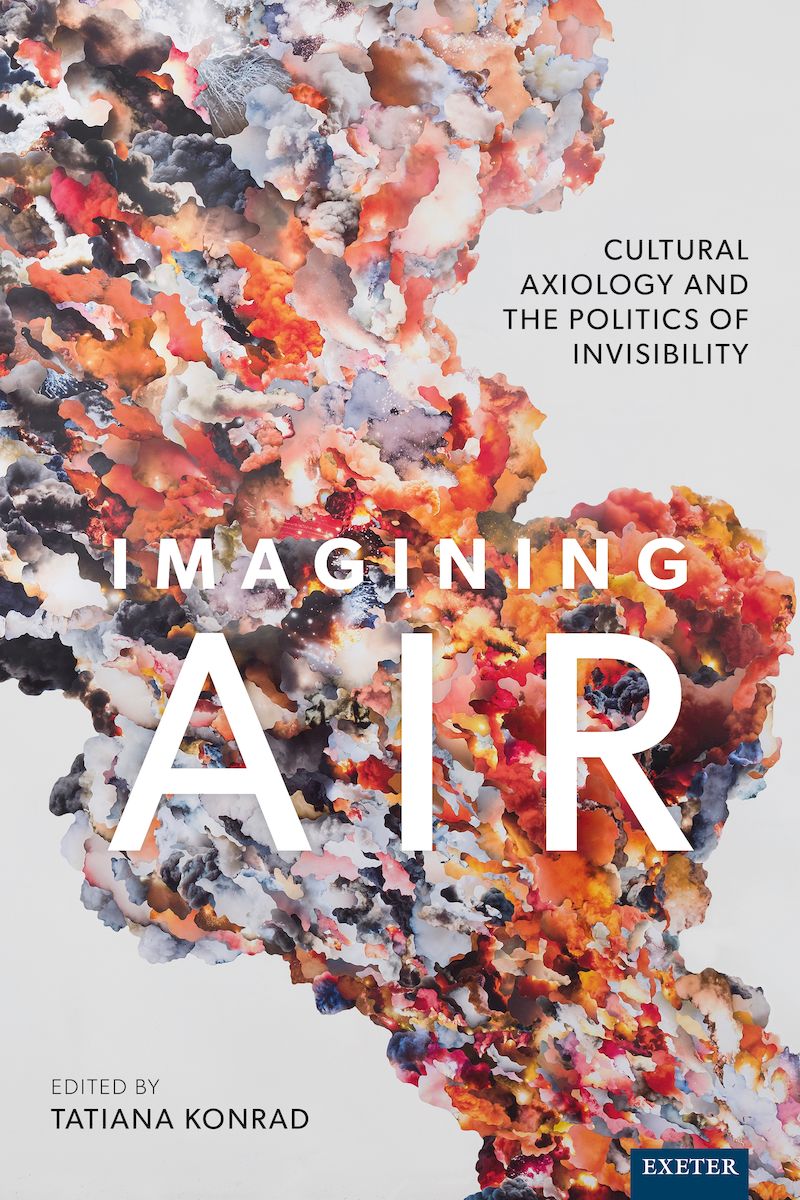
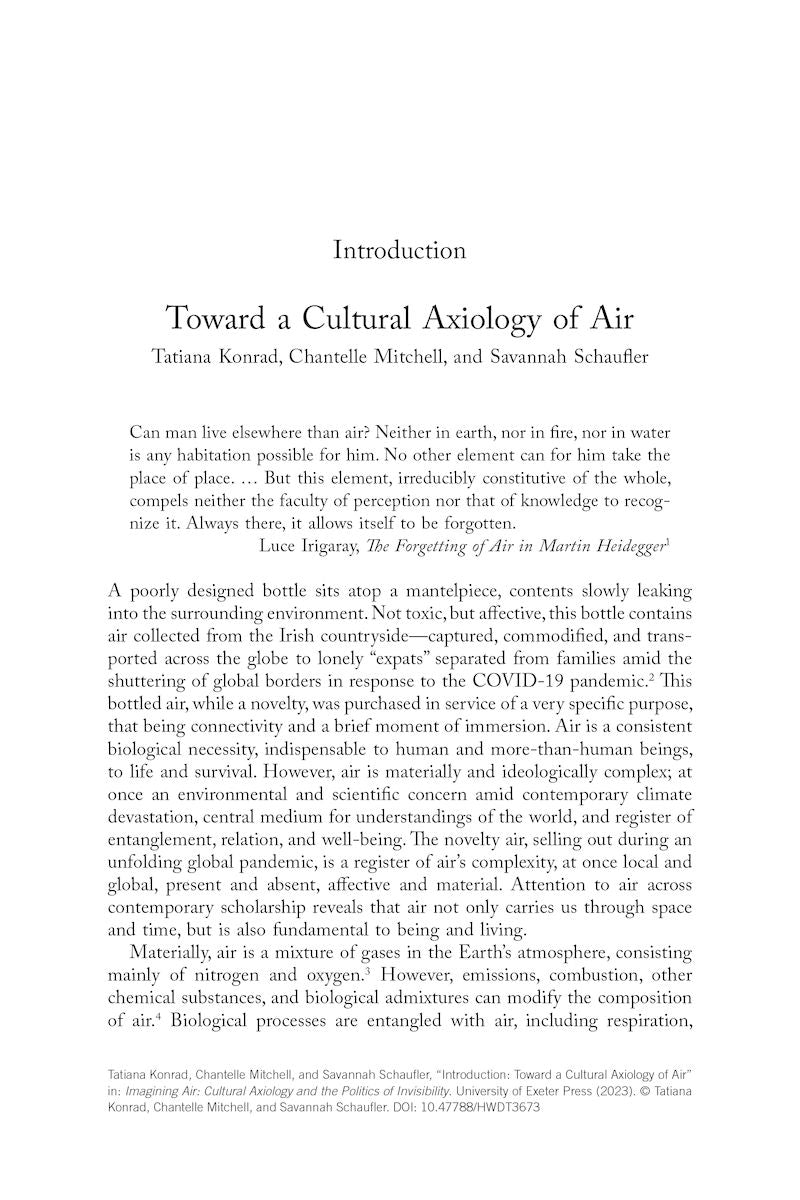

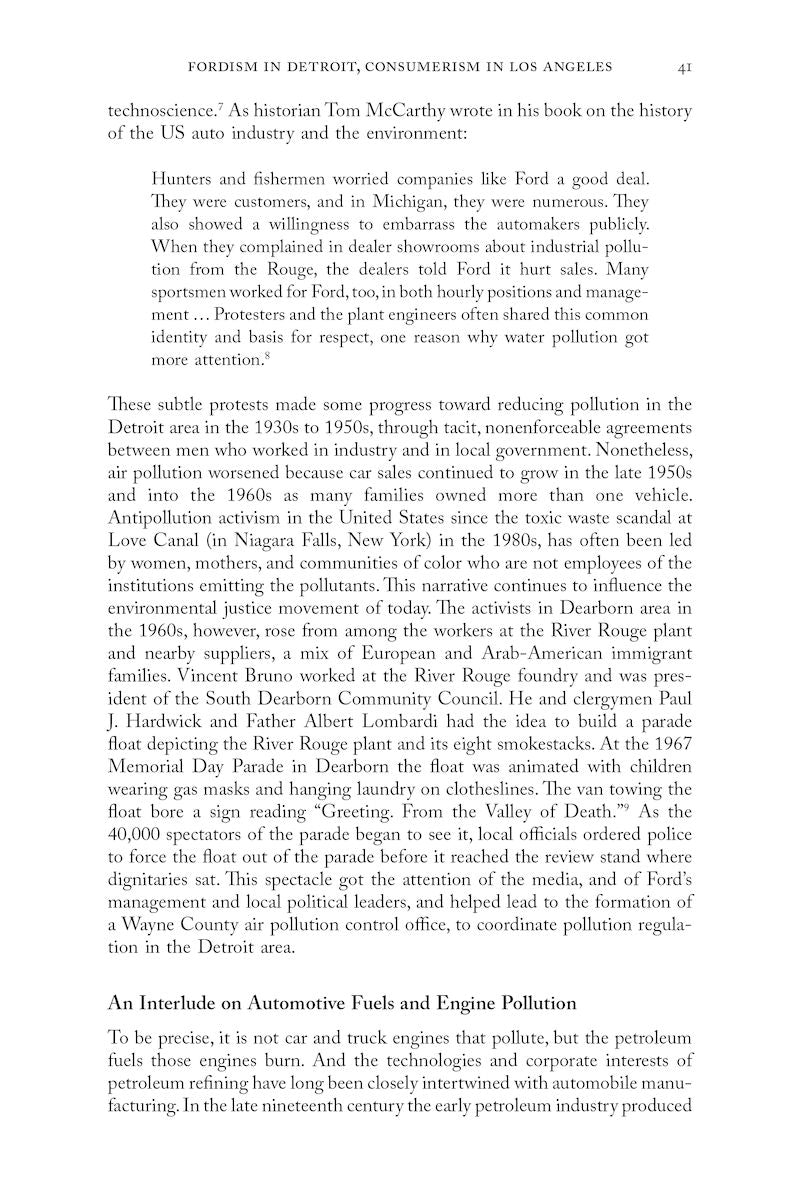

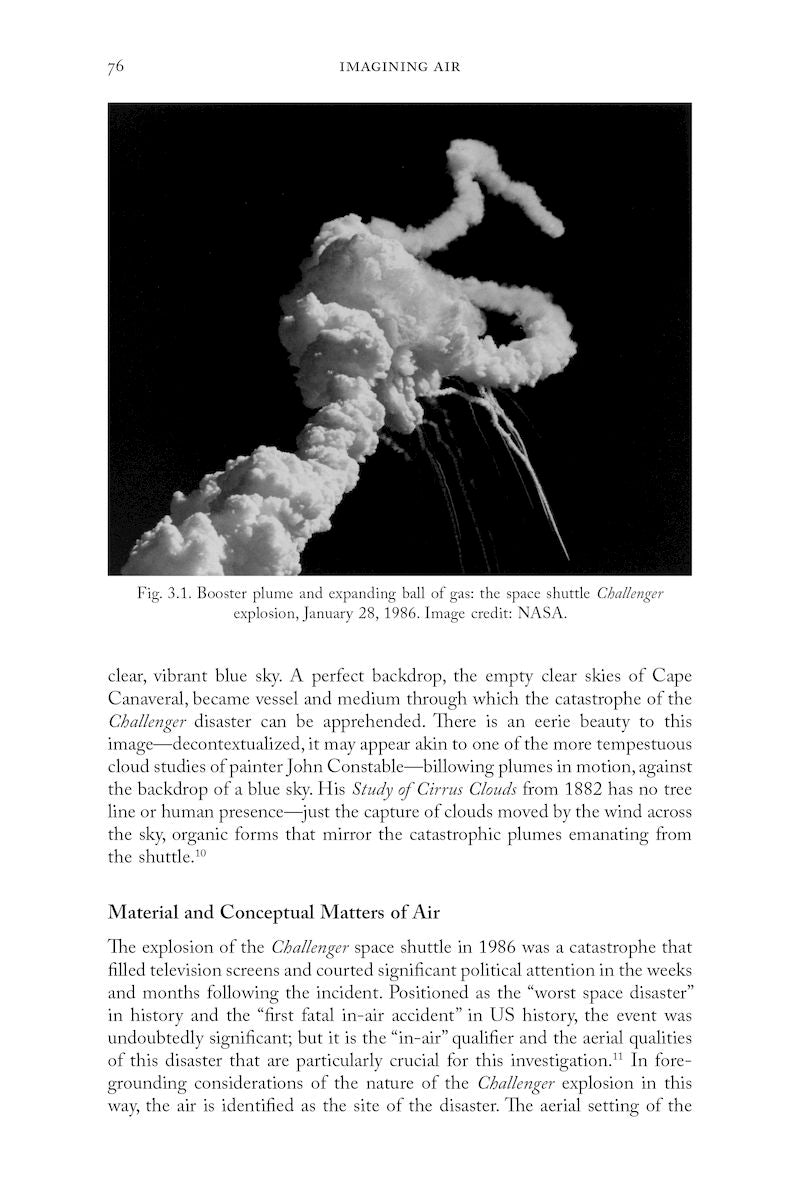
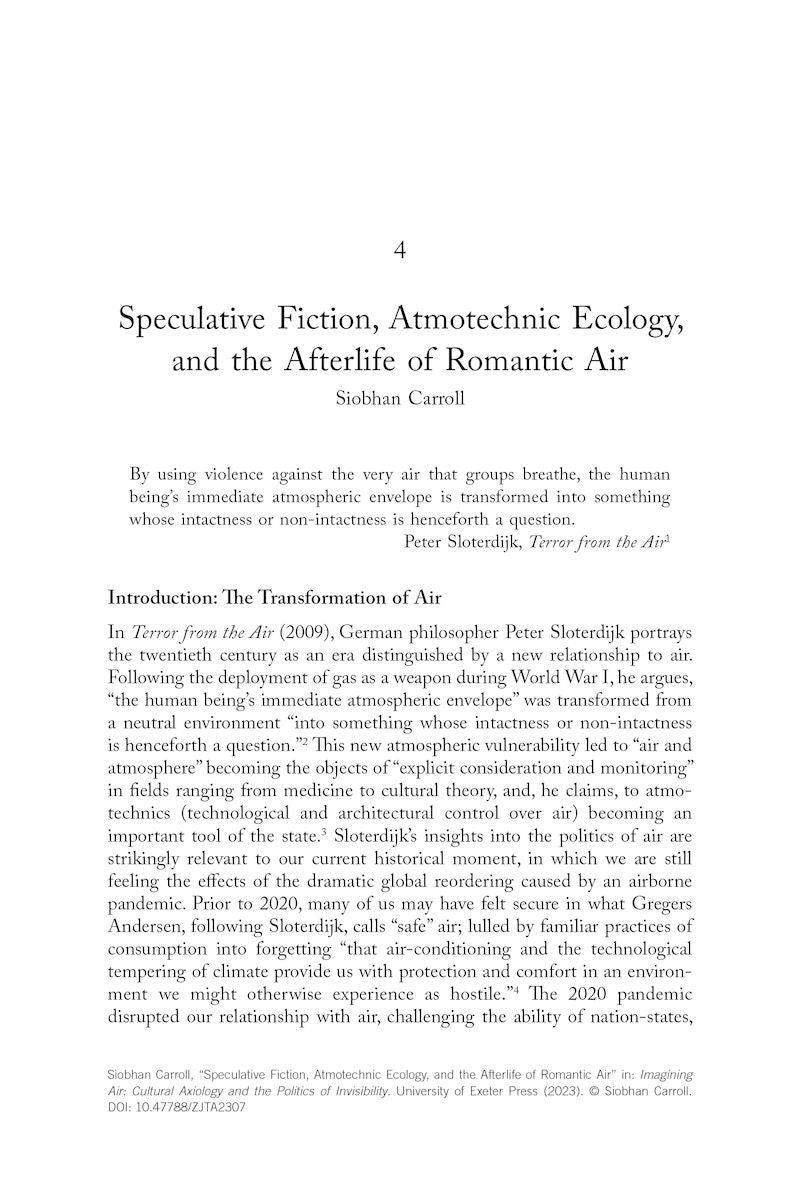
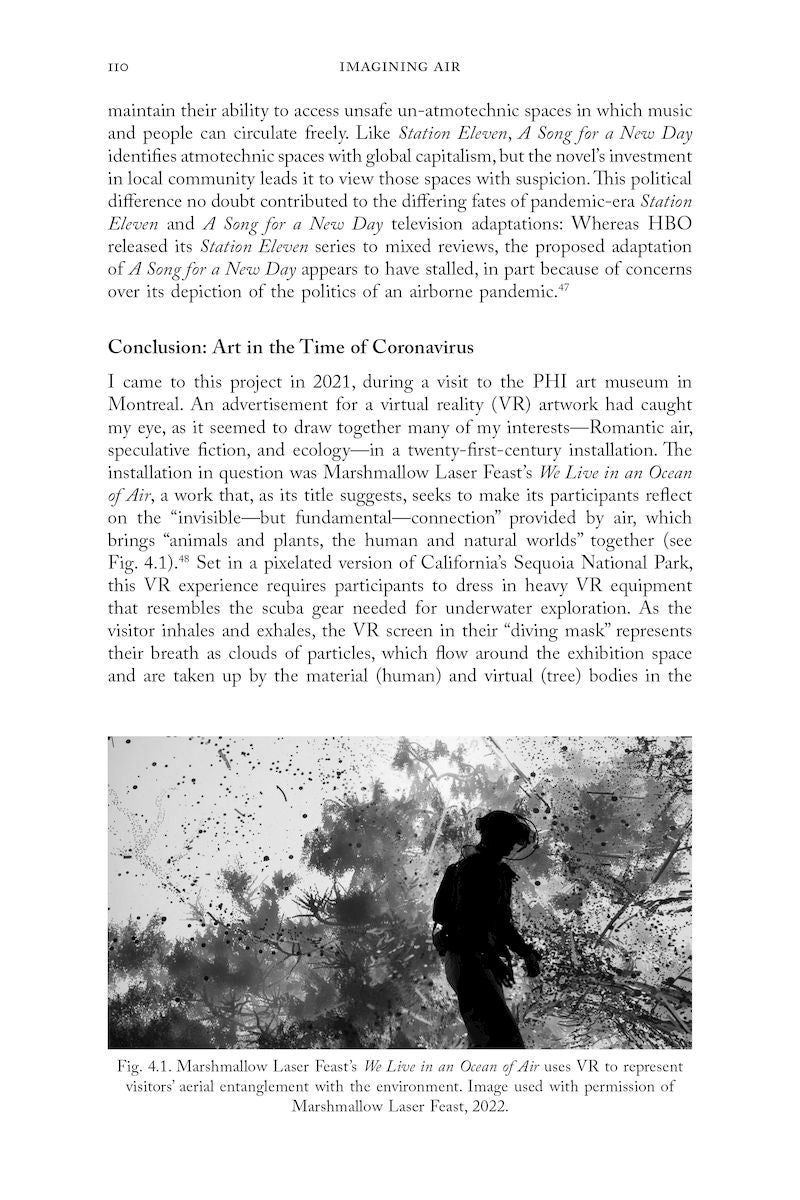
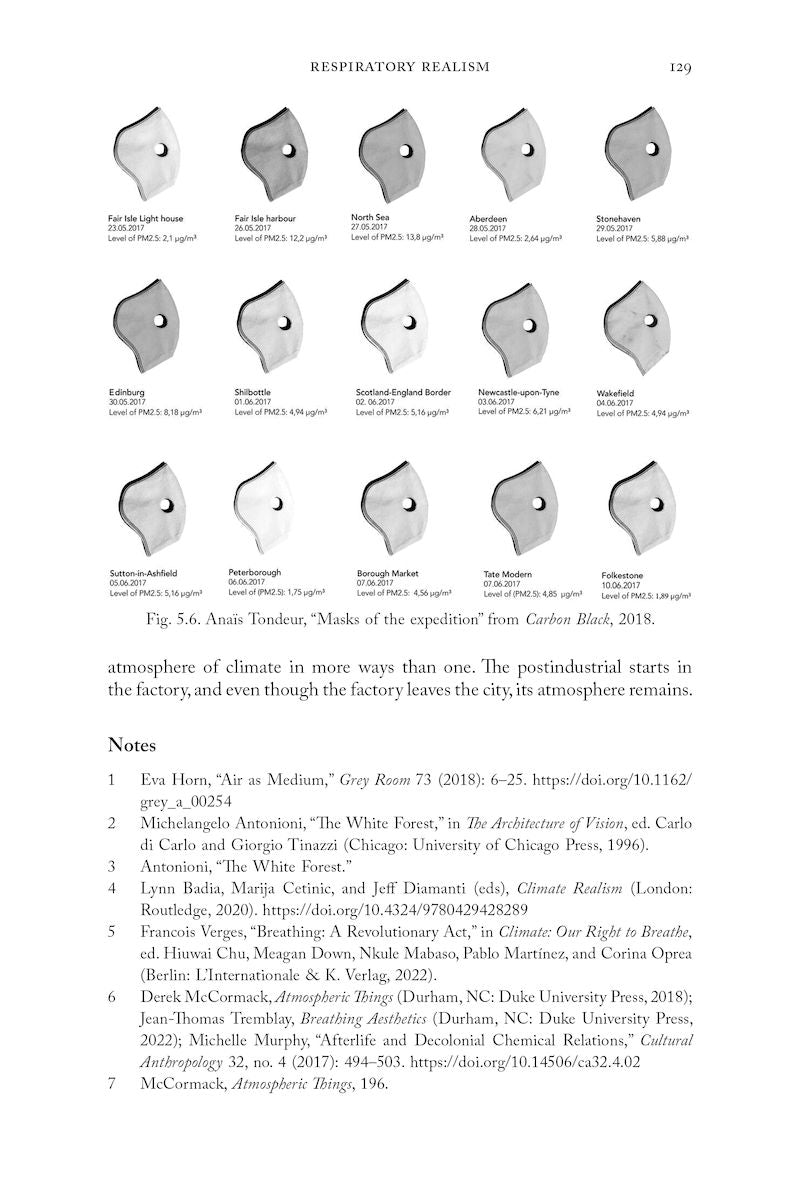
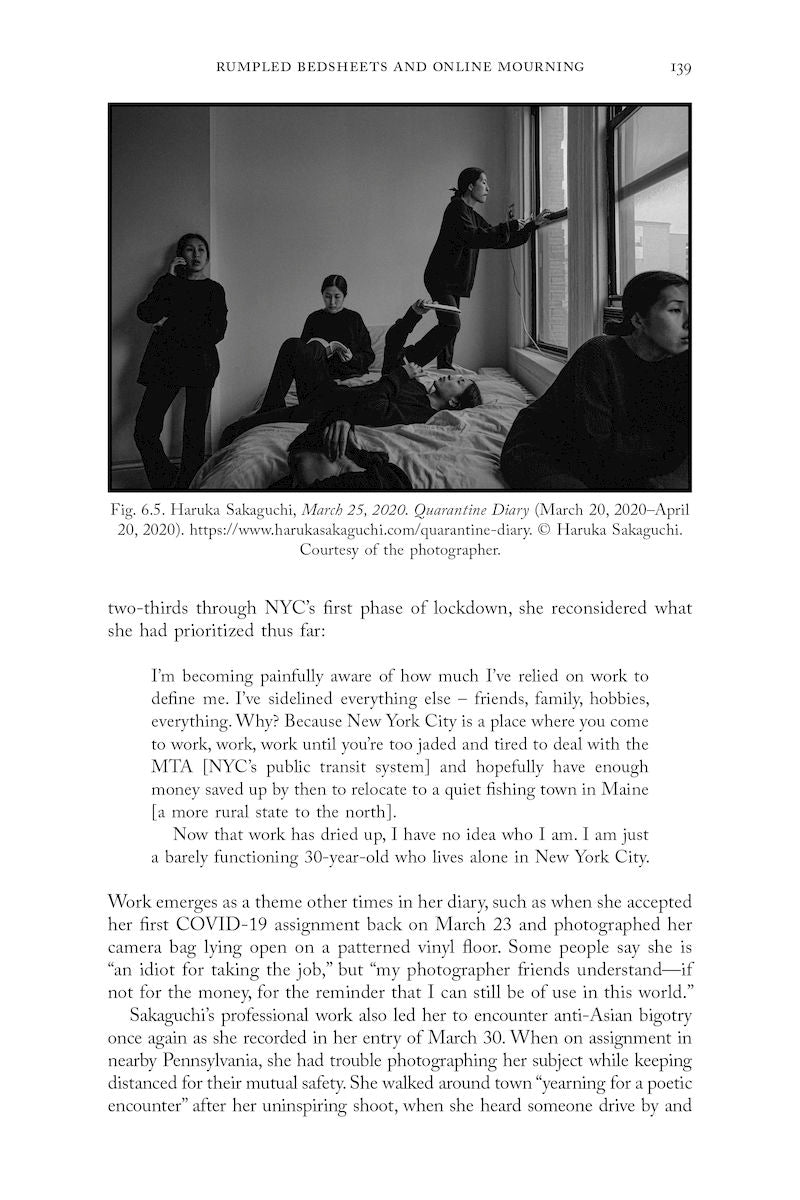
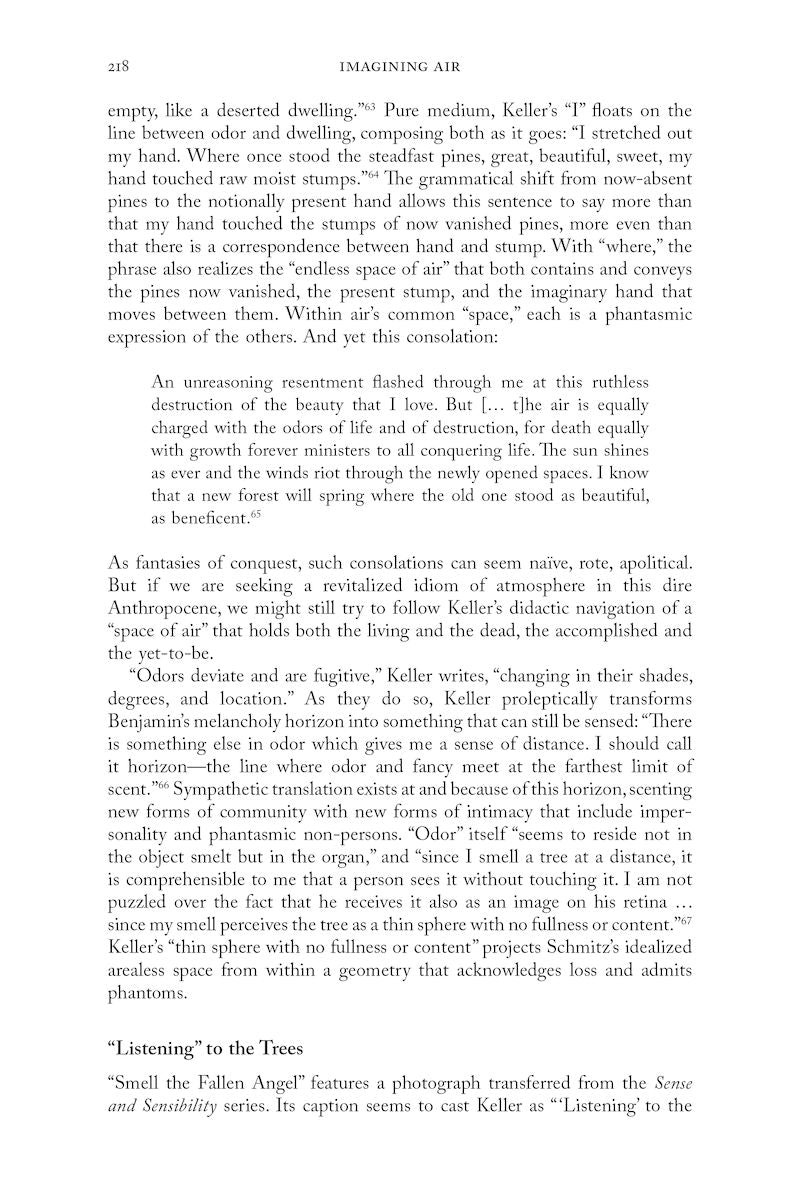
- 258 Pages
Imagining Air tackles air as a cultural, medical, and environmental phenomenon. Its major aim is to explore air’s visibility and invisibility within the environment through the investigation of such phenomena as pollution and pandemics.
The book provides environmental and medical perspectives on air, in particular how it has historically been envisioned in U.S., Canadian and British cultural and literary narratives. The authors explore how these representations and the constructed meanings of air can help us understand the complex nature of air as it pertains to the COVID-19 pandemic, air pollution and broader environmental degradation.
Chapter authors: Siobhan Carroll, Jeff Diamanti, Corey Dzenko, Clare Hickman, Tatiana Konrad, Jayne Lewis, Chantelle Mitchell, Christian Riegel, Arthur Rose, Gordon M. Sayre, Savannah Schaufler.
Air—elemental, invisible, yet weirdly ideological—circulates through this surprising collection, revealing the intermingling of ecologies and built environments, spectral legacies and all-too-present predicaments. The collection insists we cease the habitual “forgetting of air.”
Stacy Alaimo, Author of Exposed: The Politics and Pleasures of Posthuman Times.
Information on Contributors
Introduction: Toward a Cultural Axiology of Air TATIANA KONRAD, CHANTELLE MITCHELL, and SAVANNAH SCHAUFLER
Part I: Aerial Politics—Pollution, Consumerism, and Catastrophe
1. Fordism in Detroit, Consumerism in Los Angeles: A Brief History of Automobile Emissions Regulation and Lessons for Greenhouse Gas Pollution GORDON M. SAYRE
2. Dirty Air: Literary Tropes of the Canadian Nation CHRISTIAN RIEGEL
3. Witnessing Challenger: Viewing Aerial Space through the Reverberations of Disaster CHANTELLE MITCHELL
Part II: Air and Art in Times of Crisis
4. Speculative Fiction, Atmotechnic Ecology, and the Afterlife of Romantic Air SIOBHAN CARROLL
5. Respiratory Realism: Elemental Intimacies Between “Carbon Black” and Red Desert JEFF DIAMANTI
6. Rumpled Bedsheets and Online Mourning: Social Photography and the COVID-19 Pandemic—Haruka Sakaguchi’s Quarantine Diary and Marvin Heiferman’s Instagram account @whywelook COREY DZENKO
Part III: Trans-Sensory Air: Bodies and Environments
7. Envisioning Experiments on Air and the Nonhuman ARTHUR ROSE
8. The Importance of Open Air for Health: Environmental and Medical Intersections CLARE HICKMAN
9. “The Endless Space of Air”: Helen Keller’s Auratic Worldbuilding JAYNE LEWIS
10. Questions of Visibility: Aerial Relations across Society and the Environment, as Revealed by COVID-19 SAVANNAH SCHAUFLER
Index
- 258 Pages







